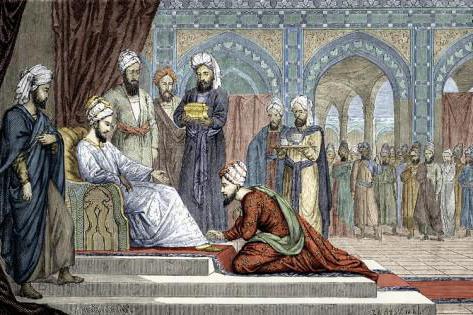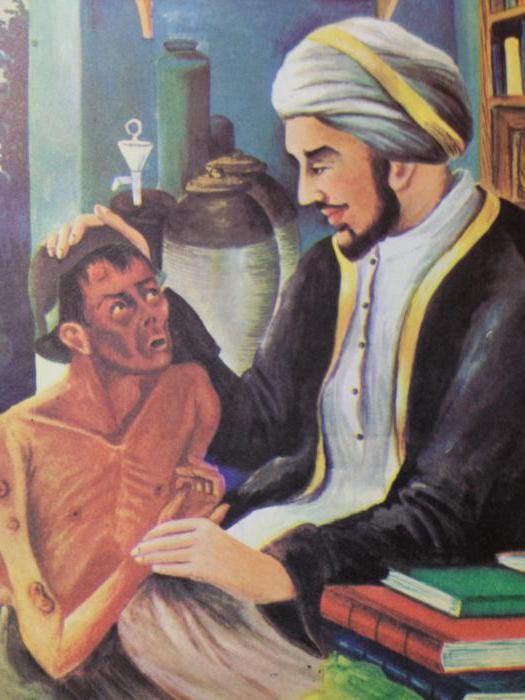The most influential and famous in the medieval Islamic world, the Persian scholar Abu Ali ibn Sina is familiar to the world under a simpler and more sonorous name - Avicenna. Contemporaries in the East called him a spiritual mentor, a sage. And this is understandable. Avicenna brought up a galaxy of philosophers, was a vizier. Combining these two aspects, he seemed to be the ideal of a scientist.
He believed that he would physically go into oblivion, with all his properties, including his appearance, but the rational part of the soul would escape the decay. The words were partly prophetic. His works from various fields of science are studied to this day, films are made about him and books are written. However, in one thing he was mistaken, scientists were able to recreate his appearance from the surviving skull. The result you see in the photo.
Abu Ali ibn Sina: a brief biography of childhood and youth
Humanity learns about the life of Avicenna from reliable, but insufficiently complete sources - the works of medieval authors (al-Kyfti, al-Baykhaki, al-Kashi , etc.).
The future philosopher and public figure, doctor and scientist was born in a small village near the city of Bukhara (the territory of modern Uzbekistan). The boy's early disclosure of intellectual abilities was facilitated by his father (an official with an interest in philosophy and science). By the age of ten, he knew the Qur'an so well that, according to the source, "he was given a marvel."
Then he mastered the basics of mathematics and Muslim law. The boy continued his further education under the supervision of the scientist Abu Abdallahom al-Natili, who had arrived in Bukhara, who settled in their house. Abu Ali ibn Sina, whose biography can be gleaned from his books, soon surprised the teacher and already explained some concepts to him. Soon he embarked on an independent assault on books on metaphysics and physics, and, according to the scientist himself, "the craving for medicine was awakened in him." It did not seem difficult to him, and already at the age of 16 he consulted experienced doctors and helped patients himself, “discovering new methods of treatment that were never described before”. The fame of a talented doctor spread quickly; at the age of 18, Ibn Sina fell into the Emir’s palace and gained open access to a rich library.
Scientist's wanderings
Years of active teaching gave way to a time of wanderings, in which Abu Ali ibn Sina plunged. The biography of the scientist in the writings of historians is indicated in approximate dates. So, he left Bukhara after the death of his father between 1002 and 1005 years. He moved to the city of Gurganj, then experiencing the heyday of political events. All scientific life was concentrated around one institution - the Mamun Academy, which brought together many scientists. It was to this society that Avicenna joined. It is known that he and his colleagues were absolutely prosperous in terms of life and lived in peace, enjoyed correspondence and scientific discussions.

In 1008, Ibn Sina was forced to leave the city. The reason was the doctor’s refusal to come to the court of the Sultan for residence. The act of the young scientist infuriated him. He gave the order to duplicate his portrait and send it to all parts with a warrant for the search and subsequent delivery of the rebel to his palace. The enterprise did not have success. As you know, Avicenna completed his wanderings in Dzhurdzhan (1012-1014 gg.). During this period, he created his treatises, began work on the “Canon of Medicine”.
After a while, the sultan again made attempts to find him, and the scientist continued his wanderings further.
Life in Hamadan
Abu Ali ibn Sina, whose biography is associated with constant wanderings, in an attempt to hide from the creeps of the Sultan, was in the city of Hamadan (modern territory of Iran). Here, the scientist spent almost ten years, from 1015 to 1024. These were very eventful years. He was actively engaged not only in science, but also in political and state affairs. He was brought to the post of vizier by the acquaintance and successful treatment of the ruler of Shamsad-Dauli. However, he soon came into conflict with the military elite and was overthrown. The emir saved him from execution by making a compromise decision to expel ibn Sina from the domain. For 40 days the doctor was hiding. However, the next attack with the emir made him reconsider his decision: to urgently find a scientist, apologize and re-appoint him to the post of minister.

After the death of the ruler, his son came to power. He suggested that Avicenna again take the post of vizier, but he refused and entered into secret correspondence with the emir of Isfahan, offering him his services.
Life in Isfahan
Located on the banks of the Zayand River and now the Iranian city of Isfahan was the last place in which Avicenna settled (Abu Ali ibn Sina). The biography of this period (1024-1037) is rich in scientific work. The years spent at the court of the emir are the most fruitful. This was greatly facilitated by the enthusiasm for science by the ruler himself. It was during this period that the philosopher and scientist wrote, perhaps, his most capacious work - The Book of Fair Trial, which consisted of twenty volumes. However, she disappeared during one of the enemy invasions.
Avicenna graduated from his life in Hamadan, where he was buried. He died at the age of 56, after a long illness, in the sources referred to as "colic."
Medical Proceedings
Medicine is the main field of activity in which Abu Ali Ibn Sin became famous during his lifetime. “Canon of Medicine” (pictured below) - a series of books (five volumes in total), written by him in 1023, is one of the most famous. It was on it that many doctors of the West and the East in the 12-17th centuries studied the basics of medicine.
In the book, Avicenna suggested that many diseases can be caused by tiny creatures, which, among other things, spoil water and food, are peddlers. He studied a number of diseases, distinguishing between plague and cholera, described leprosy and emphasized the infectiousness of smallpox, and also highlighted issues related to surgical operations, and revealed the topic of “complex” drugs (more than half of them are of plant origin).
Ibn Sina is also known for such works as A Treatise on the Pulse, On the Benefits and Dangers of Wine, Medicines, Blood Vessels for Bloodletting, Poem on Medicine, and many others (a total of 274 valuable manuscripts).
Chemistry and Astronomy
It is known that Avicenna opened the process of distillation of essential oil, and also knew how to get sulfuric, nitric and hydrochloric acids, potassium and sodium hydroxides.
The scientist criticized Aristotle's views in the field of astronomy, arguing contrary to the fact that stars and planets shine with their own light, and do not reflect it from the sun. He wrote his own book, which contained, among other things, comments on the work of Ptolemy.
Images in books and movies
It is not surprising that for their books and films, many writers and directors choose such a person as Abu Ali ibn Sina as the central character. The biography of the famous philosopher and doctor is rich in tragic events and truly significant discoveries. The most famous work is the book of Noah Gordon, “A student of Avicenna,” published in 1998 and filmed in 2013 by Philippe Stölzlyam (frames from the film - in the photo below).
The Spanish writer E. Theodoro also addressed the topic of the scientist’s life. His novel is called "The Avicenna's Manuscript" and tells about individual episodes of the life of ibn Sina.
Could something be more valuable and more useful in the medieval world than what Abu Ali ibn Sina discovered for medicine? Biology, astronomy, mechanics, philosophy, literature, medicine, psychology are sciences in which he was brilliantly knowledgeable and educated. In addition, he had a keen mind, and according to contemporaries, a phenomenal memory and observation. All these qualities and numerous works have perpetuated the memory of a Persian scientist for centuries.